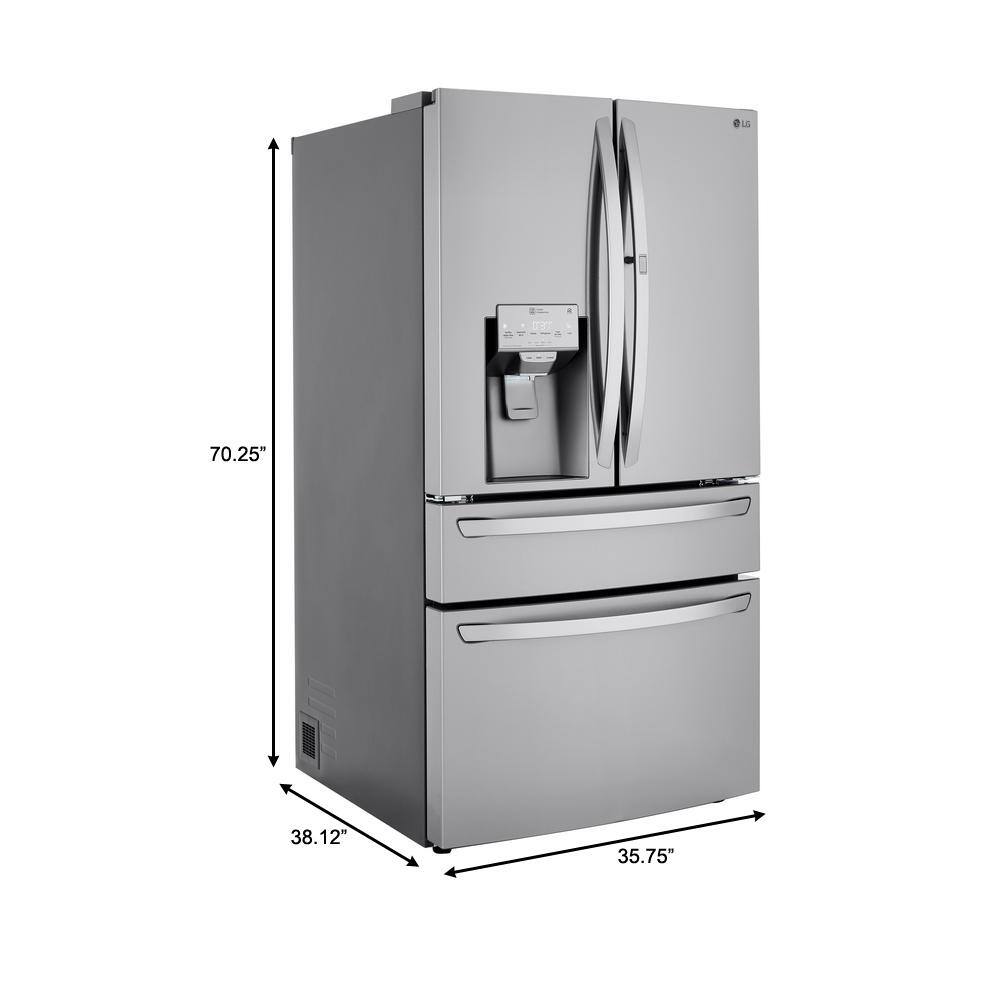Samsung – 26.5 cu. ft. Large Capacity 3-Door French Door Refrigerator with Family Hub™ and External Water & Ice Dispenser – Stainless steel
Samsung’s 26.5 cu. ft. large capacity, 3-Door French Door Family Hub™ Refrigerator, is beautifully designed with a minimal dispenser and sleek-edge doors with modern handles.
Large Capacity
More space to store and organize food you love, with 10% larger capacity.*
Modern Design
Clean lines and modern form blend beautifully into any kitchen.
Fingerprint Resistant Finish
A finish that withstands everyday smudges, so you spend less time cleaning.
All-around cooling
Multi-vent technology keeps items on every shelf evenly cooled.
Ice MaxTM
Large capacity ice maker, stores up to 4.2 lbs of ice.
Minimal Display Dispenser
Combined ice and water dispenser provides easy access and fits almost all container types.
Full-Width Drawer
Large drawer space for storing party platters, deli items, beverages and more.
Wi-Fi Enabled
Use your smartphone to control the temperature and monitor your refrigerator remotely.
High-Efficiency LED Lighting
LED lighting designed to beautifully light up the interior of your fridge so you can quickly spot what you want.
EZ-Open Handle™
Specially designed handle allows for easy opening and closing of a fully loaded freezer. Automatically slides out for easy access, organization and storage.
ENERGY STAR® certified
Eco-friendly and energy-efficient.**
Adjustable spillproof shelves
The middle shelf can be easily adjusted to fit taller items.
Sabbath mode
Adjusts your refrigerator to meet requirements of certain religious laws, holidays, and days of rest.
* When compared to Samsung 3-door model RF265BEAE with 24.2 cu. ft. capacity.
Additional information
| Dimension | Product HeightSpecifications Info info |
|---|---|
| Capacity | Total Capacity |
| Warranty | 1 Year |






by Tase
Very easy to use and great product overall. Ice does have issues if you don’t use it regularly.
by Ashley
Best fridge ever. Very spacious and has tons of features. The view inside feature is the best. I can see inside from my phone.
by Greg
Another purchase, another great refrigerator I always buy Samsung cause they make good refrigerators, always buy them for my rental homes.
by Mark
This freeze is so fancy . We don’t need anything to play the music . My son really like it to write draw picture.
by Nikki
Love it, love it, love it!!!!!
by Guido
This refrigerator so far is amazing! Helpful with letting us know what to buy, give recipes, and we can use Alexa to add items to our shopping list. Everything we could have wanted in a refrigerator.
by Helen
I was nervous buying a Samsung, but this has been a great buy. Love everything about this refrigerator. My husband hooked everything up by himself and had no issues. So far everything is working perfectly.